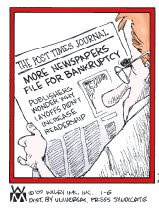I especially like the comments on Why I don't send a Christmas card to my insurance company. Here's a hint - one part of the family was puzzled when some, but not all, monitoring tests were covered.
In comments, you will find talk about just how big of a gift does a wife who saved the family $1,200 in a cash outlay deserve. With persistence, she was able to learn the unpaid tests were coded wrong and the health insurance company was supposed to pay.
The Good Morning America story was a bit more dramatic, so do check it out.
To save you time (so you can check your bills) here are the nine tips I pulled from Wife saves husband, then saves thousands on their medical bills
- Keep a log of the procedures performed and medicines given.
- Request an itemized bill
- Match up the dates (The man was billed for procedures that happened before his attack)
- Watch out for extra zeros
- Beware of fat fingers - ie. one medication wad listed 7 times on their bill.
- Know what's included so you don't get charged separately.
- Don't pay for medical mistakes
- Don't be afraid to negotiate - with doctors, not the billing department.
- You can hire help. There are people who like this type of challenge.
I have been trying to find the silver lining in my daughter's fight against breast cancer. I've pointed out how helpful it will be to have these "base" scans of her body in years to come.
This might be a chance for me to redeem myself on the "good mom" list as I never finished her baby book. I am working carefully on her medical book. I've been keeping track of which tests she has had, what medicines she takes and who she sees. It's important, to me, that she not get extra radiation or that we repeat tests. Plus, it is a chance to save money, right.
I've already had the pleasure of decoding some of the bills. In network and out-of-network. Negotiated rates and .... (I'm keeping in mind what I learned from The Stupid Cancer Blog - insurance companies will deny three times because most peoplr wiill pay rather then keep fighting ...check into balance billing as hospitals and others may try to collect higher charges more then negotiated but you might not have to pay above the negotiated amount (I say might as it gets back to in and out of network issue and if you signed an agreement to pay everything)
We got a reminder of how important the lists and spreadsheets can be.Someone called to ask if we needed to work out a payment plan to pay for a test done in early November. We might. But first we need the bill.






